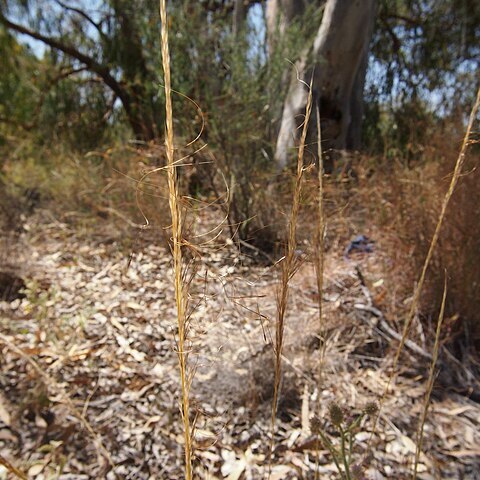Plants to c. 0.8 m tall, with shoots mostly intravaginal. Culm nodes 2 or 3, mostly not exserted, glabrous, thickened. Leaves: sheaths tight at first, glabrous to pubescent; ligule 0.3–1.5 mm long, truncate, ciliate, membranous; auricles glabrous, sometimes absent; blade expanded to inrolled, 1–2 mm wide, slightly to moderately ribbed, usually scaberulous to scabrous, glabrous to ciliate on margins. Inflorescence 25–55 cm long, contracted (although spreading at anthesis), usually dense; spikelets slightly gaping. Glumes subequal, 8–13 mm long, acute to acuminate. Callus 1.2–2.2 mm long, weakly bent at tip, densely sericeous. Lemma 4–6 mm long, smooth to slightly granular, sericeous; coma obscure; lobes to 0.15 mm long, glabrous to ciliate; awn 45–70 mm long, with column 10–13 mm long, scabrous to pubescent. Palea c. 90% length of lemma, obtuse to acute, often erose. Lodicules 2, obtuse.

